
In General
Signal Basics
Signals
Bridges
Tunnels
RAILROAD SIGNALS HOME
All things considered, signals and bridges are for the most part, forgotten items for the brick manufacturers to make. And, if you do find some, most, if not all signals and bridges offered by themselves (and not part of a larger kit) are not produced by Lego. So, you will have to either go out and buy individual pieces from Lego to make your own, or buy from the few vendors that do offer them. Also, the majority of signals I have seen in kits are only two color signals.
IMPORTANT NOTE: Keep in mind, that the offerings from the Chinese manufacturers may be short production runs, so, if you're looking for some of these items I have mentioned on my Lego pages (as they were originally done in early 2023), the kits may not be available when you go looking for them. I have not provided links to the sellers pages on EBay, but you can do a search by the sellers name to see what they currently have offered, if anything.
Acknowledgements:
Denver Todd
lego.com
Google Search
Ebay
Websites and other additional information sources of interest:
http://www.lego.com
https://www.bricks4kidz.com/
https://mattzobricks.com/
https://www.bricks4kidz.com/blog/the-anatomy-of-a-lego-brick/
https://www.brickfanatics.com/
https://mattzobricks.com/automation/signals Page in English, most comments appear to be in German :-)
American signals, probably more than any other country, has an abundance of signal types. This is due to the fact that a number of railroads "early in the game" did their own research into what they felt was the best kind of signal. So, we have/had CPL, PL, and tri-angular shaped color light signals in addition to semaphore (and later, color light) signals.
Almost all Lego style signals I have come across are static non-lit signals. It should be easy to make the signals operational by using small surface mount LED's with attached wires. Depending on how "true" you want to be to using just Lego parts, even semaphores shouldn't be too hard to animate, same things if you want to do a wig-wag signal. One way to do this would be to use R/C servos, and since there is like hardly any load on the servo, you can use the smallest ones you can find.
If you model a railroad in the late 1800's or early 1900's, remember that WHITE was used as clear and GREEN was used as caution. Purple was often used as STOP but only in dwarf or low signals. Refer to https://railroadsignals.us/rulebooks/N&W15/index.htm for examples.
Semaphores are almost completely gone -- and CPL, PL, and searchlight signals are quickly disappearing in order to standardize using color light signals.
The N&W and Amtrak signals are a variation of the Pennsy PL signal. The N&W had a majority interest by the Pennsy back in the 60's, and they got the N&W to switch to their signal type when the N&W started replacing semaphores. NS is quickly replacing the old CPL signals.
When Amtrak took over the NEC from the Penn Central, they colorized the Pennsy signals, and came up with signals similar to the B&O's CPL's, keeping the center signal only on the bottom head, for a white lens to indicate "stop & proceed". Without the white, the signal displays "stop". The Amtrak NEC signals shown below will be found on the Northeast Corridor between NYC and Washington DC. Elsewhere, Amtrak uses the signals of the host railroad since they are guests.
If you're doing Union Station in DC, they use dwarf B&O CPL's, except for the last location on the NEC (before getting into Washington Terminal) where they have a CPL made with Pennsy PL equipment. On the CSX side of the Washington Terminal, south of the Second Avenue Tunnel, there are two full size CPL signals.
Trilight signals are a variation of color light signals - the name TRILIGHT is a nickname, due to the triangular arrangement of the lenses - NOT because there are three lenses on the signal head.
Almost all transit systems now use color light signals - some use a combination of color light and bar signals. One exception is the Staten Island Rapid Transit, which still uses dwarf B&O CPL's throughout the system. Some systems use standard color light signals (like the NYC subway system), while some like the DC Metro, use just red and white instead of standard G/Y/R. Some systems, like the Baltimore Light Rail, use color light signals in reverse format, with red on the top, like vehicular traffic lights.
There are a bunch of specialized signals, most of which are variations of Pennsy PL signals (for some reason). These can be found here .
Here are the majority of Standard American Signals.... The screen capture comes from my homepage at: https://railroadsignals.us/index.htm
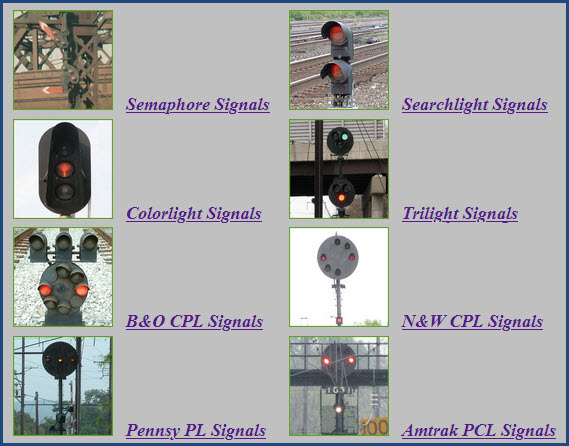
Brick Train Depot Searchlight Signals
https://bricktraindepot.com/shop/instructions/layout/railroad-infrastructure/searchlight-signals/
Unlit as shown, but can be made to with little trouble and small magnet wire to wire up the LED's.
The fifteen bucks is just for a PDF (I'm guessing) of the plans to build any of three versions.
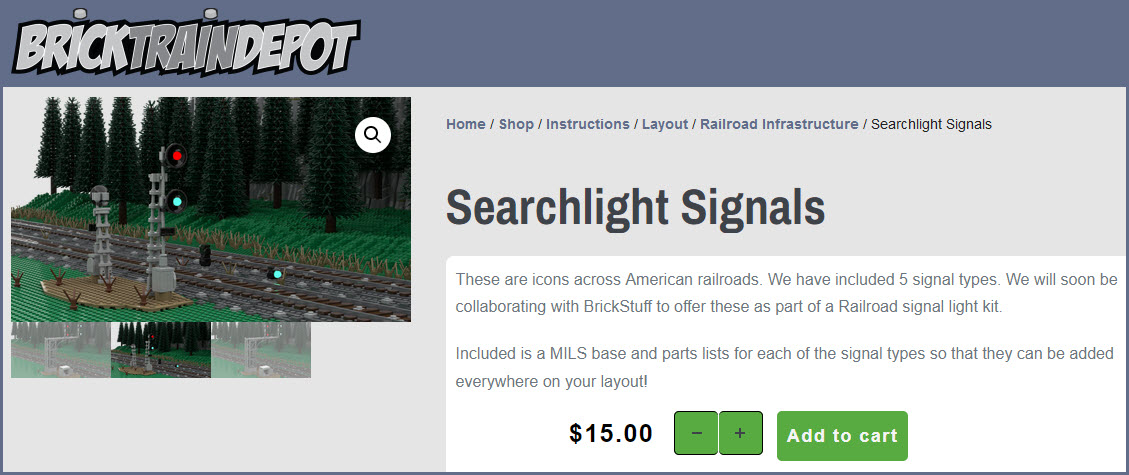
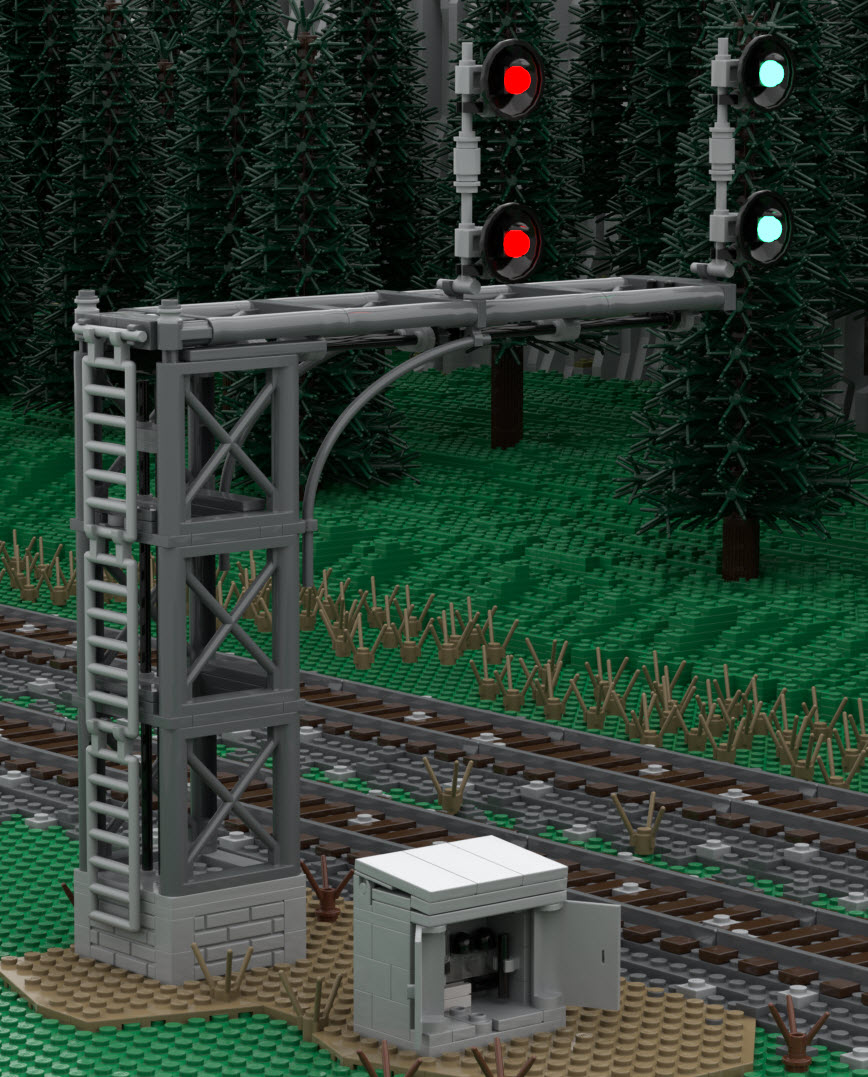
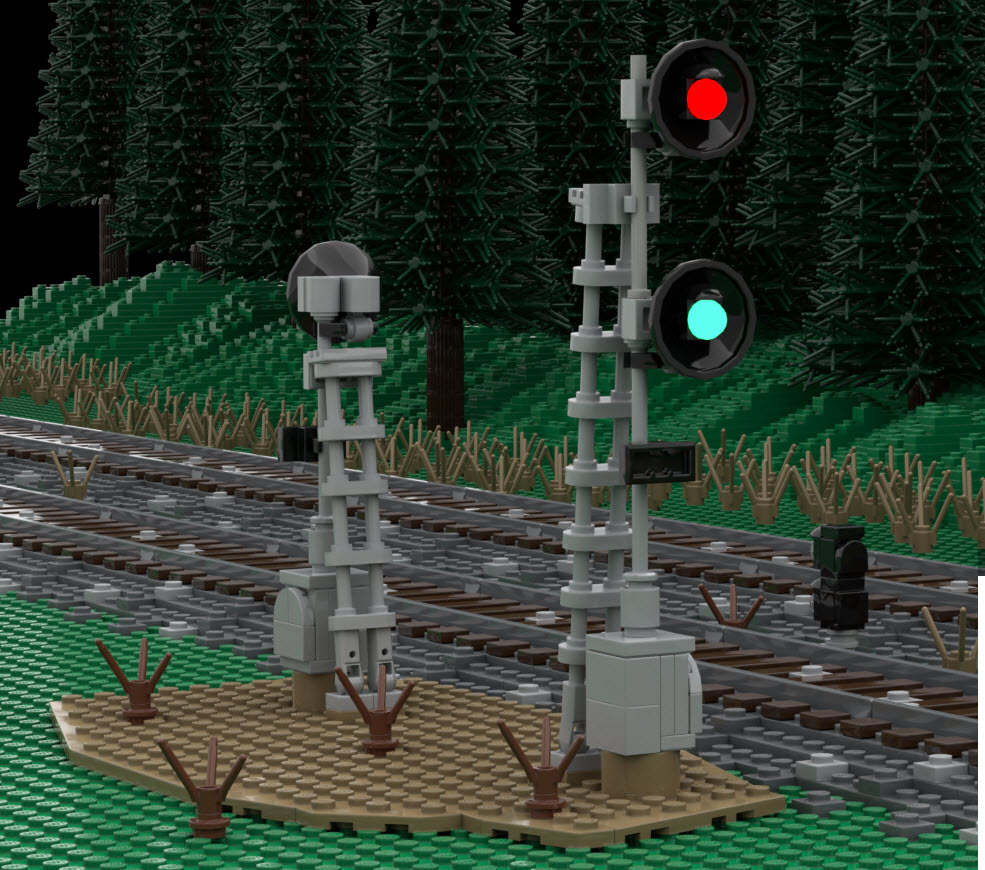
Jie Star 59007
As part of this non-powered Crocodile styled electric locomotive, Jie Star includes two versions of non-operating signals.
One is a cantilever style two-color color light signal, not a searchlight type, although if you used clear lenses, and RGB LED's (or G/R LED's), you could make it a searchlight style signal.
The other signal they include is a dwarf two-color colorlight signal, with yellow and red lenses included. Here again, if you use LED's to light the signal, you could do anything you want.
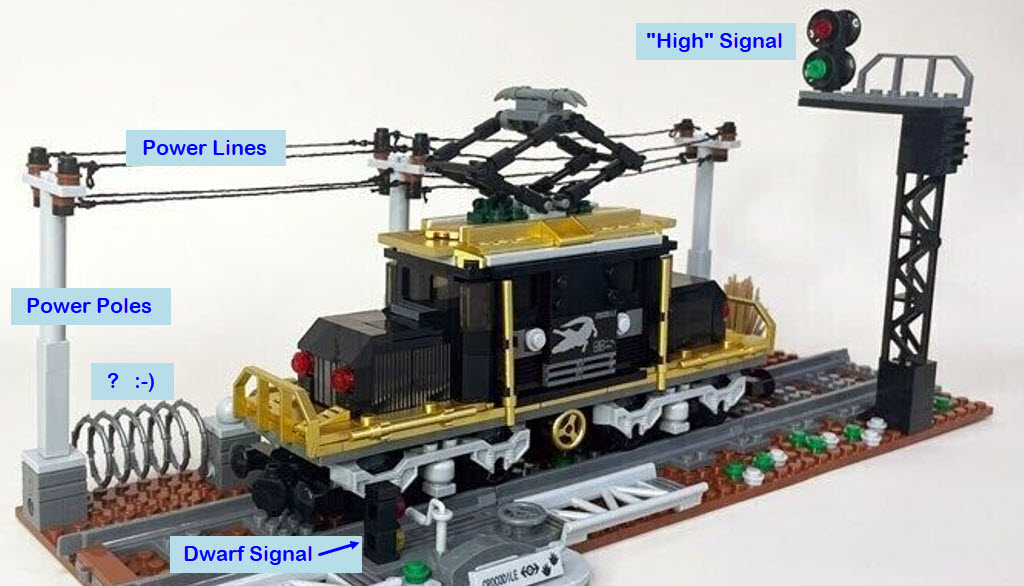
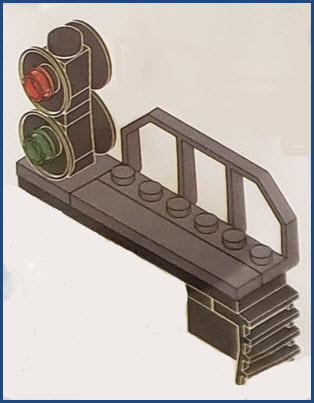
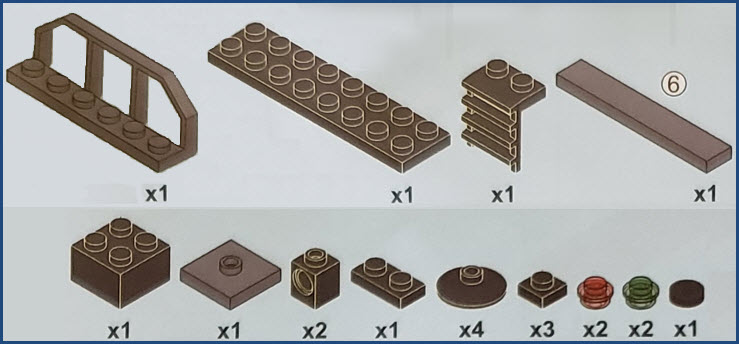
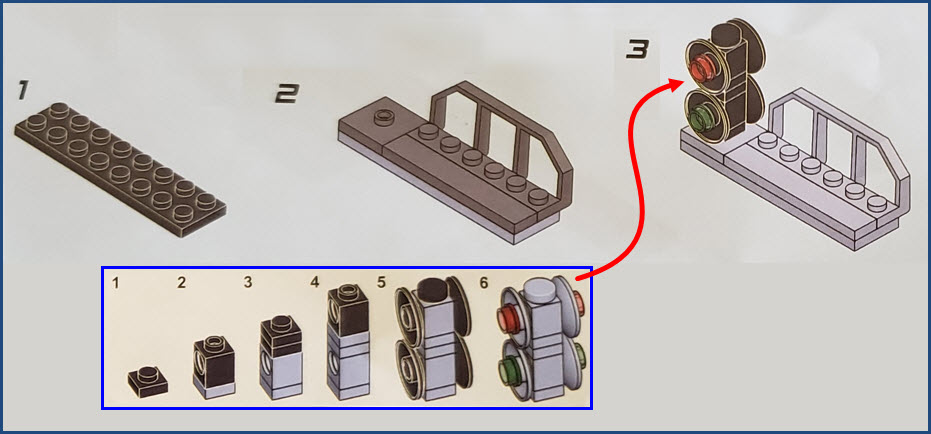
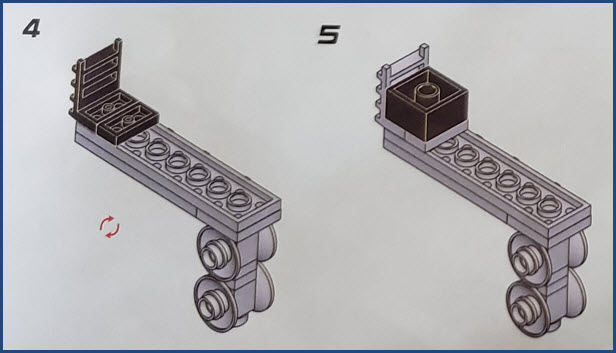
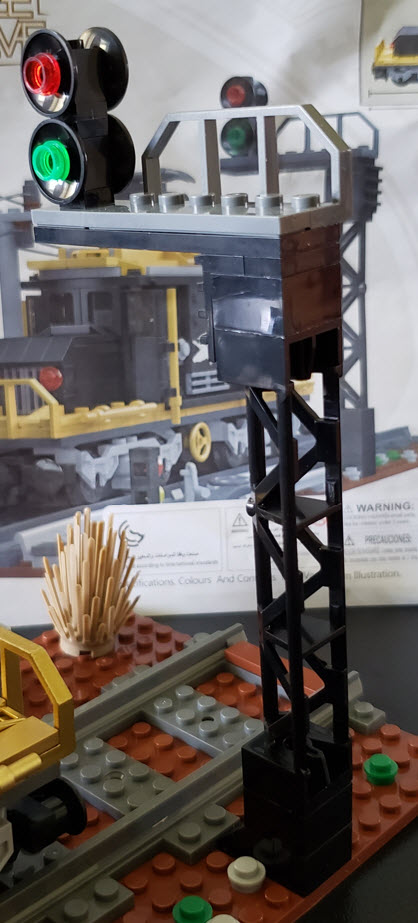
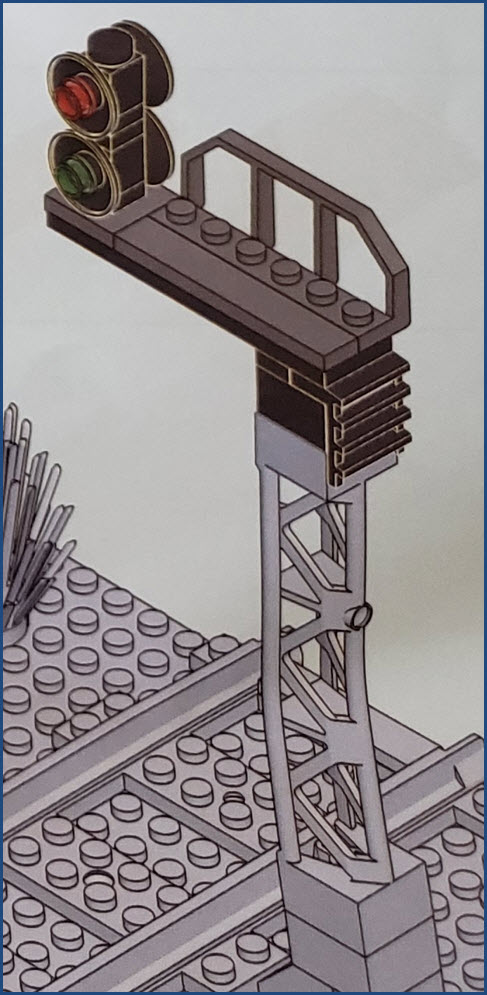
American Signal Sampler
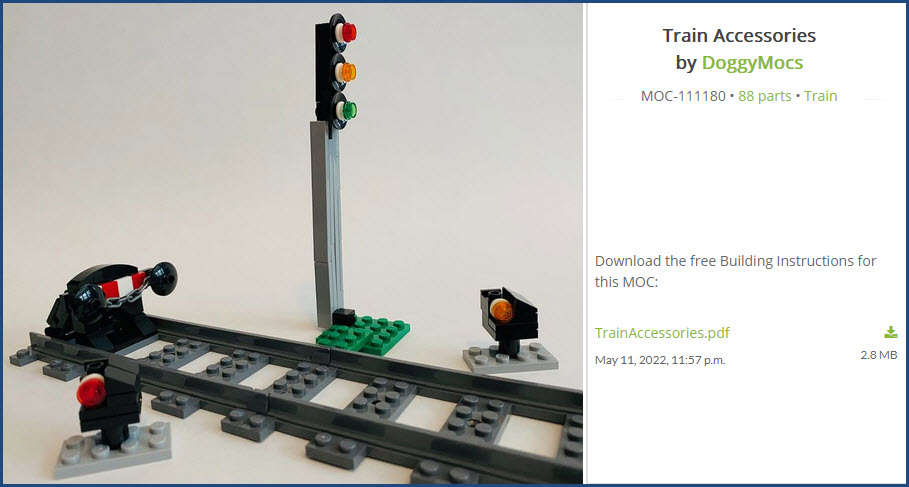
https://rebrickable.com/mocs/MOC-111180/DoggyMocs/train-accessories/#details
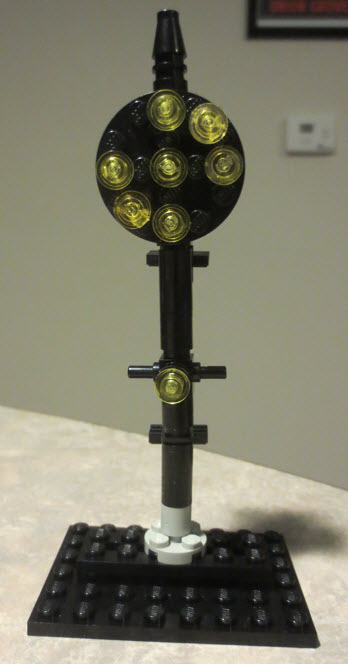 Pennsy PL (Position Light) Signal by Matt Csenge, lit using Brickstuff equipment.
Pennsy PL (Position Light) Signal by Matt Csenge, lit using Brickstuff equipment.Found on Flickr
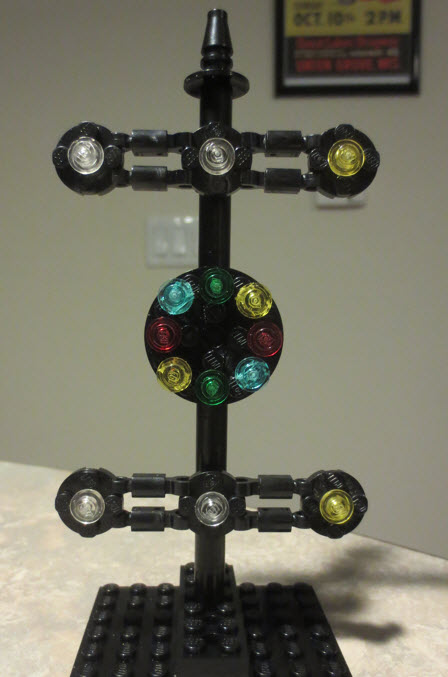 A
"full" B&O
CPL (Color Position Light) Signal by Matt Csenge, lit using Brickstuff equipment.
A
"full" B&O
CPL (Color Position Light) Signal by Matt Csenge, lit using Brickstuff equipment.Found on Flickr
German Signal Sampler
From the Mattzo Bricks page, all signals on their pages are wired, lit, and operate. Mattzo has a really extensive and comprehensive website covering a number of ways to automate your Lego layout using Bluetooth, Wi-Fi, and manual methods. Obviously, not all comments are in English.
https://mattzobricks.com/
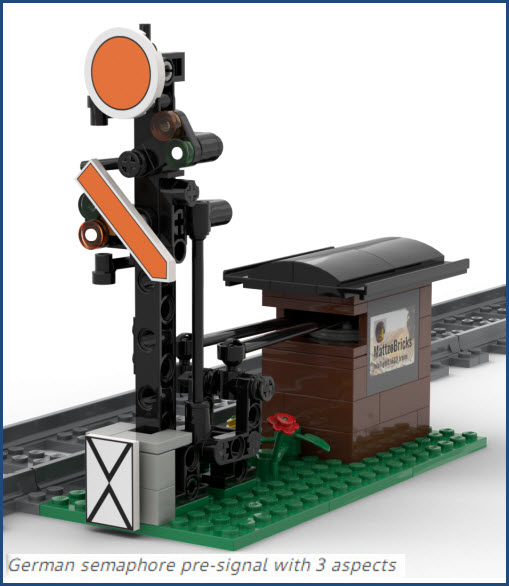
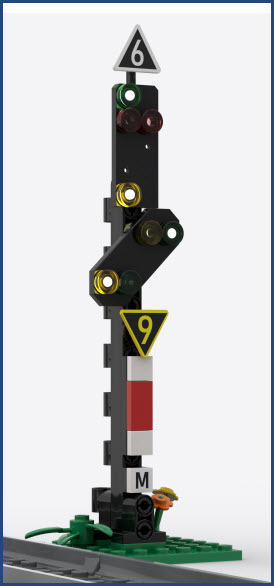
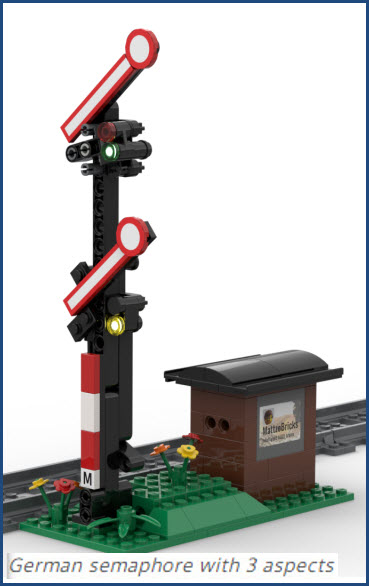
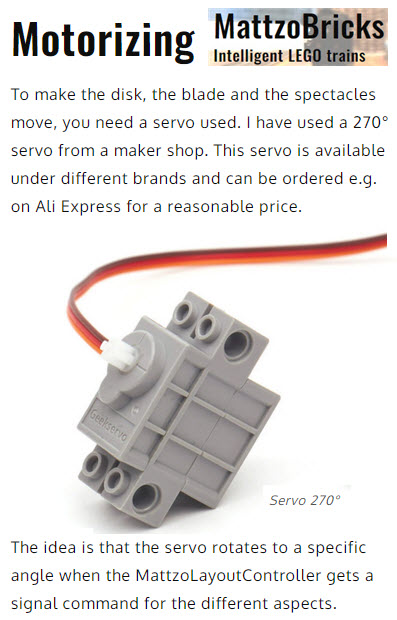
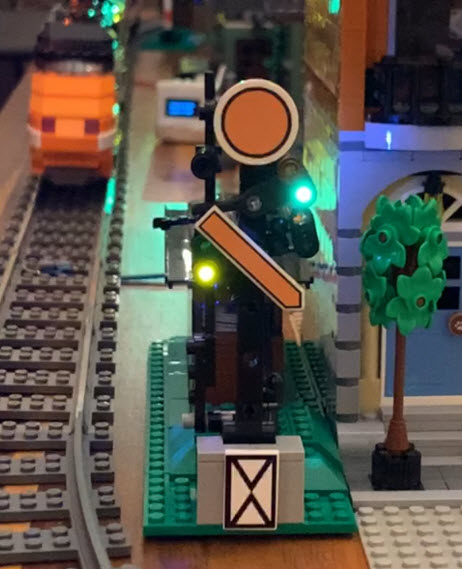
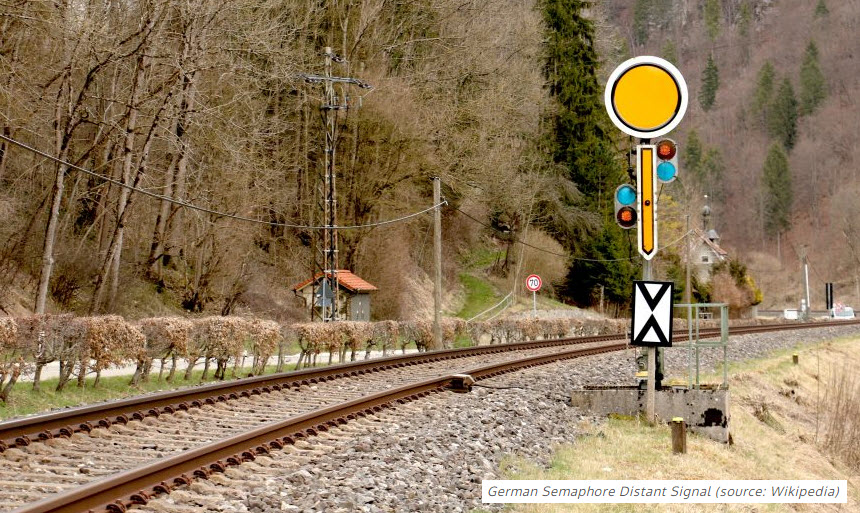

British Signal Sampler
From EBay, seller Andagift (UK). Signals are manually operated, and can be assembled to the left or right.
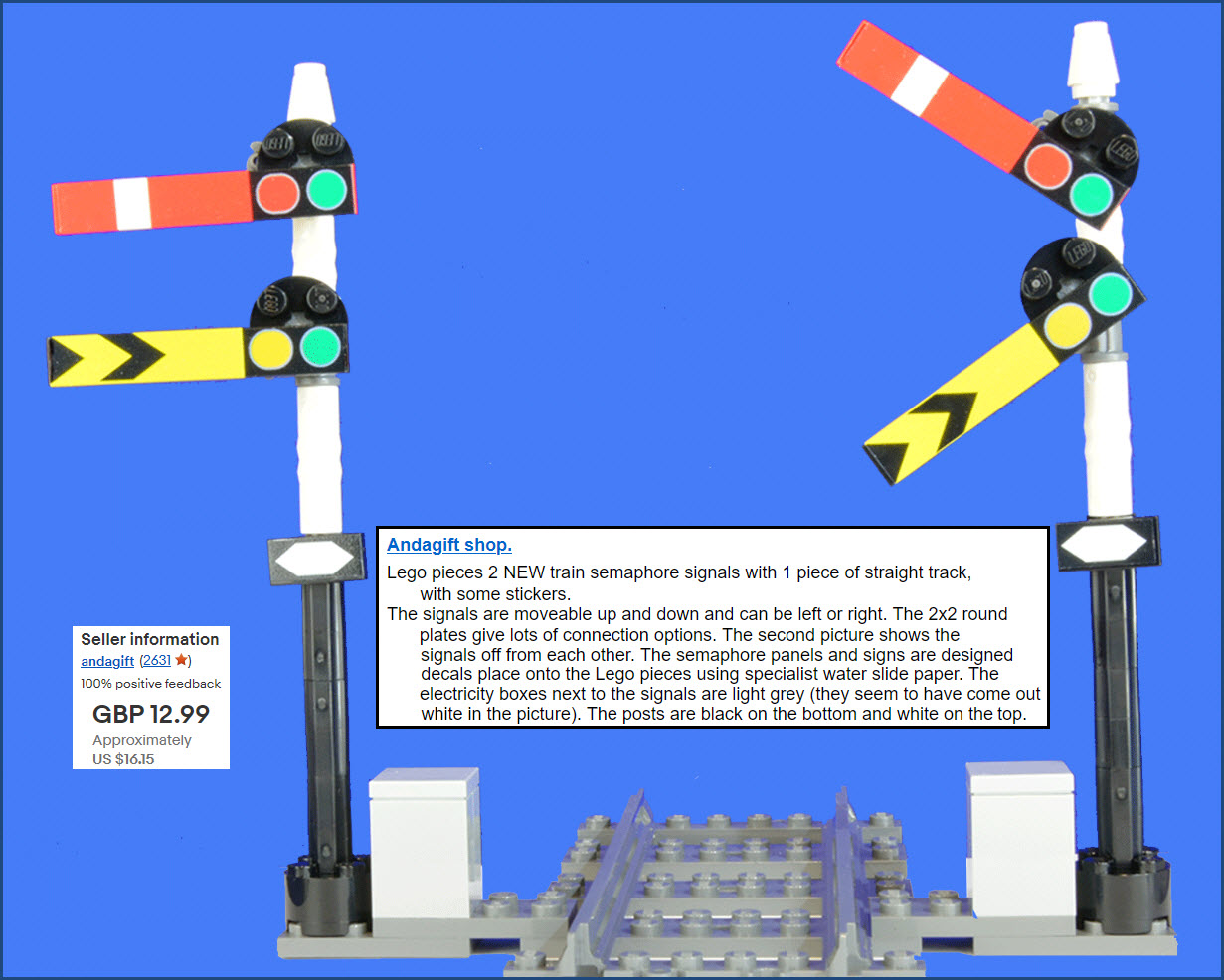
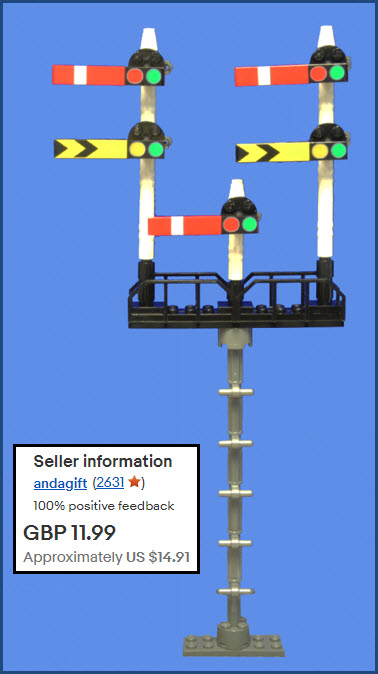
Bridges
Bridge and tunnel options for L-Gauge trains are not plentiful. You gotta do some searching :-)
Bridge
This bridge is available in three colors: black, dark grey, and light grey. Average price, I've seen it from $31 to $44. Ships from China, not a Lego product.
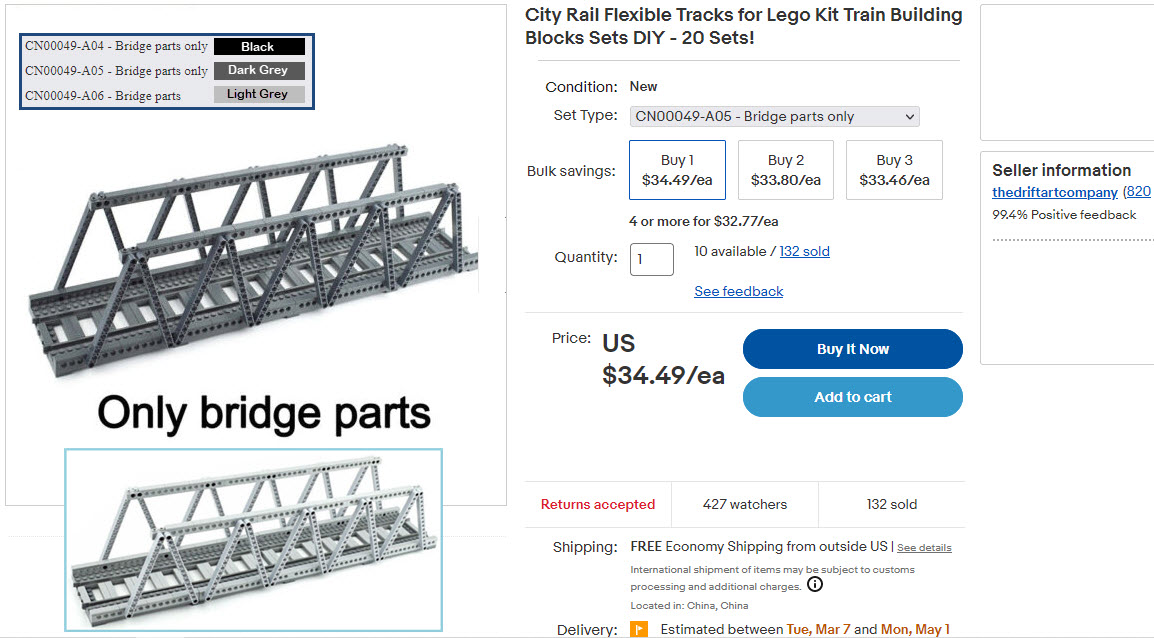
"City Train" Track Tunnel
Found on EBay from a variety of vendors, you can find this tunnel portal by doing a search for "Lego Tunnel" or "City Train Track Tunnel Exit Entrance". It is available for between $33 to 40 bucks. They all ship from China. If you buy two kits, you can make a complete tunnel with two portals, buy 4, and you can make a short two-track tunnel with portals at both ends.
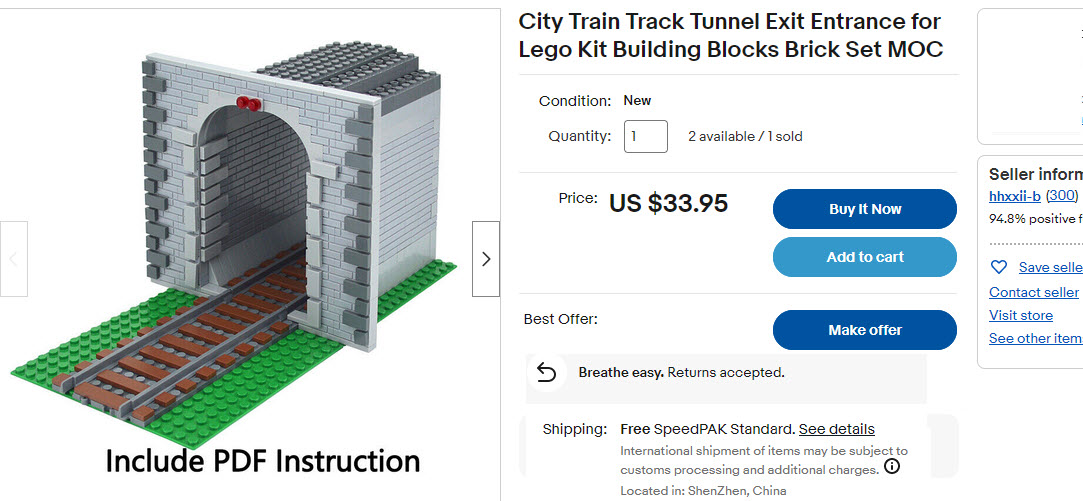
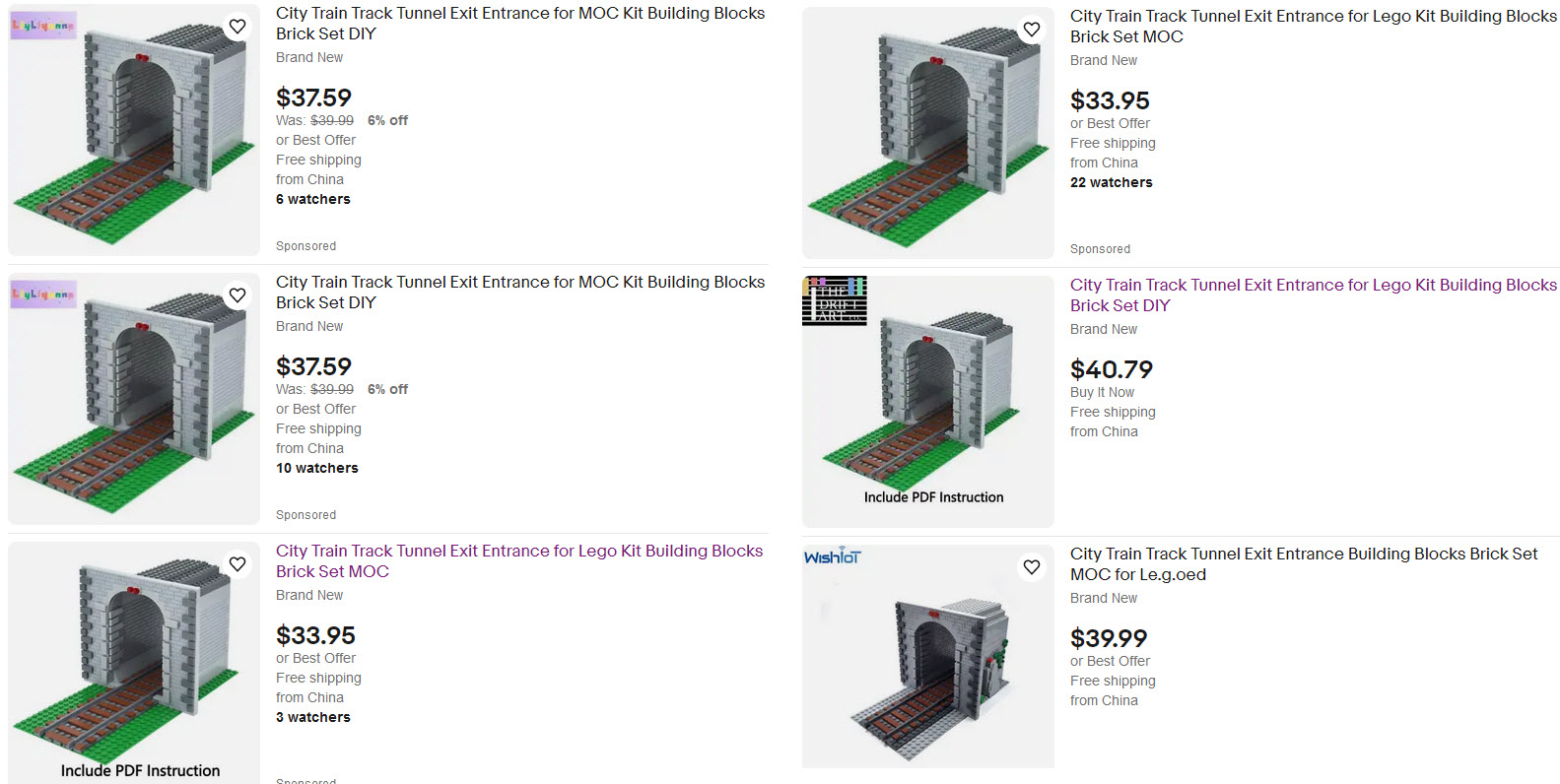
Disclaimers:
New format 10/26/23: Please check out my disclaimer page for my standard dribble and contact info here
RAILFAN GUIDES HOME
RAILROAD SIGNALS HOME
NEW APR02/2023, APR09/10/2023, OCT22/24/2023, NOV11/12/2023, DEC14/2023
Last Modified 14-Dec-2023